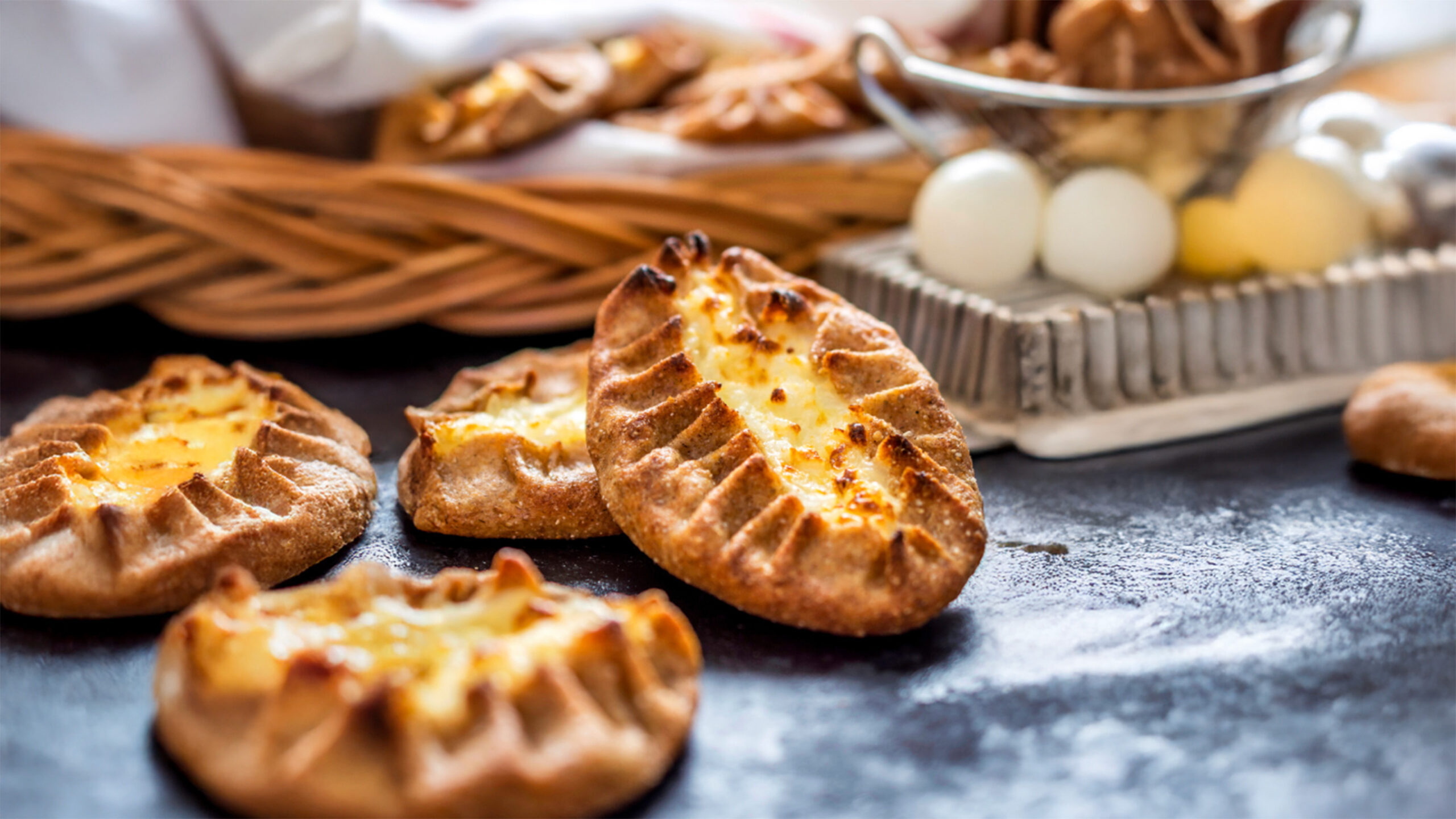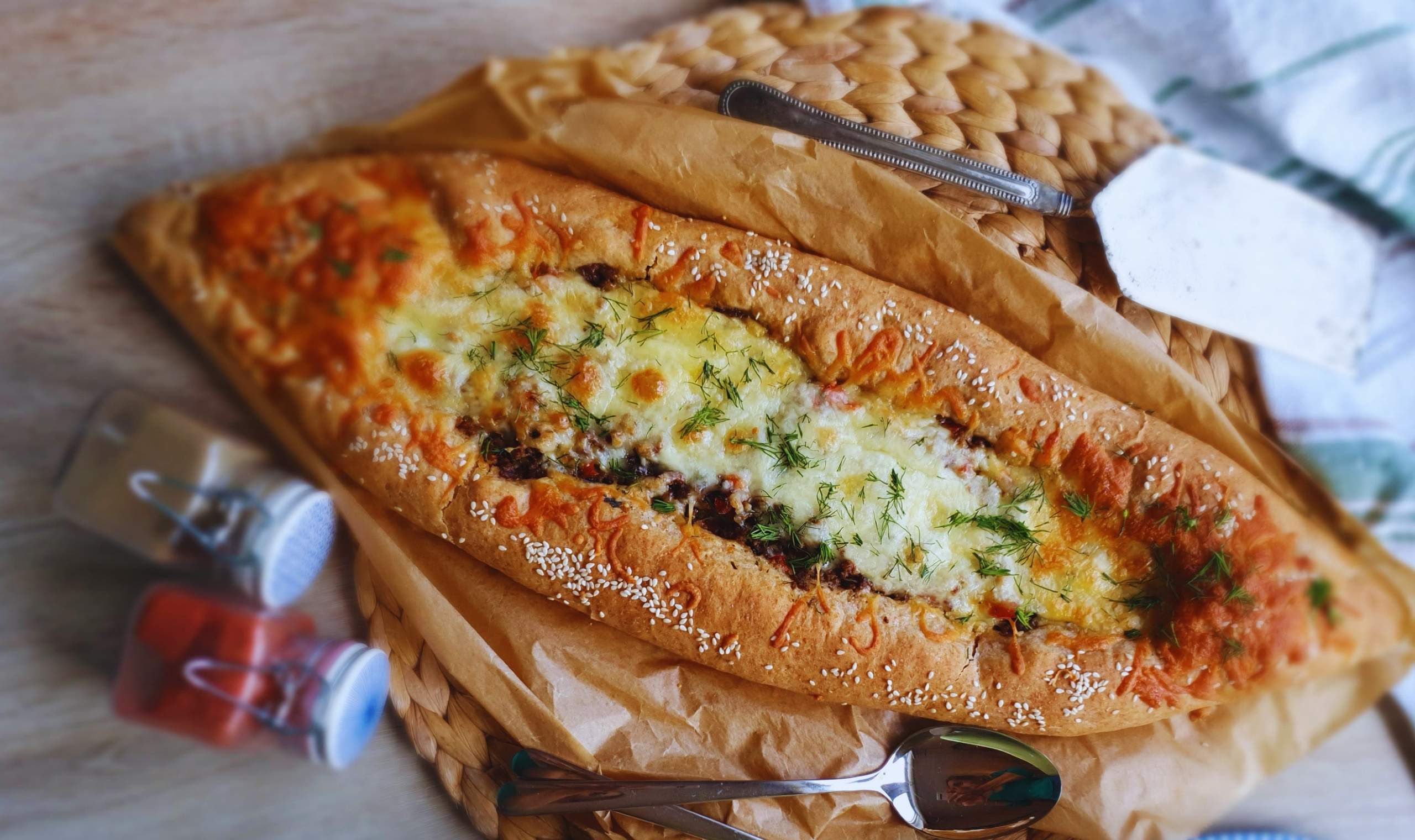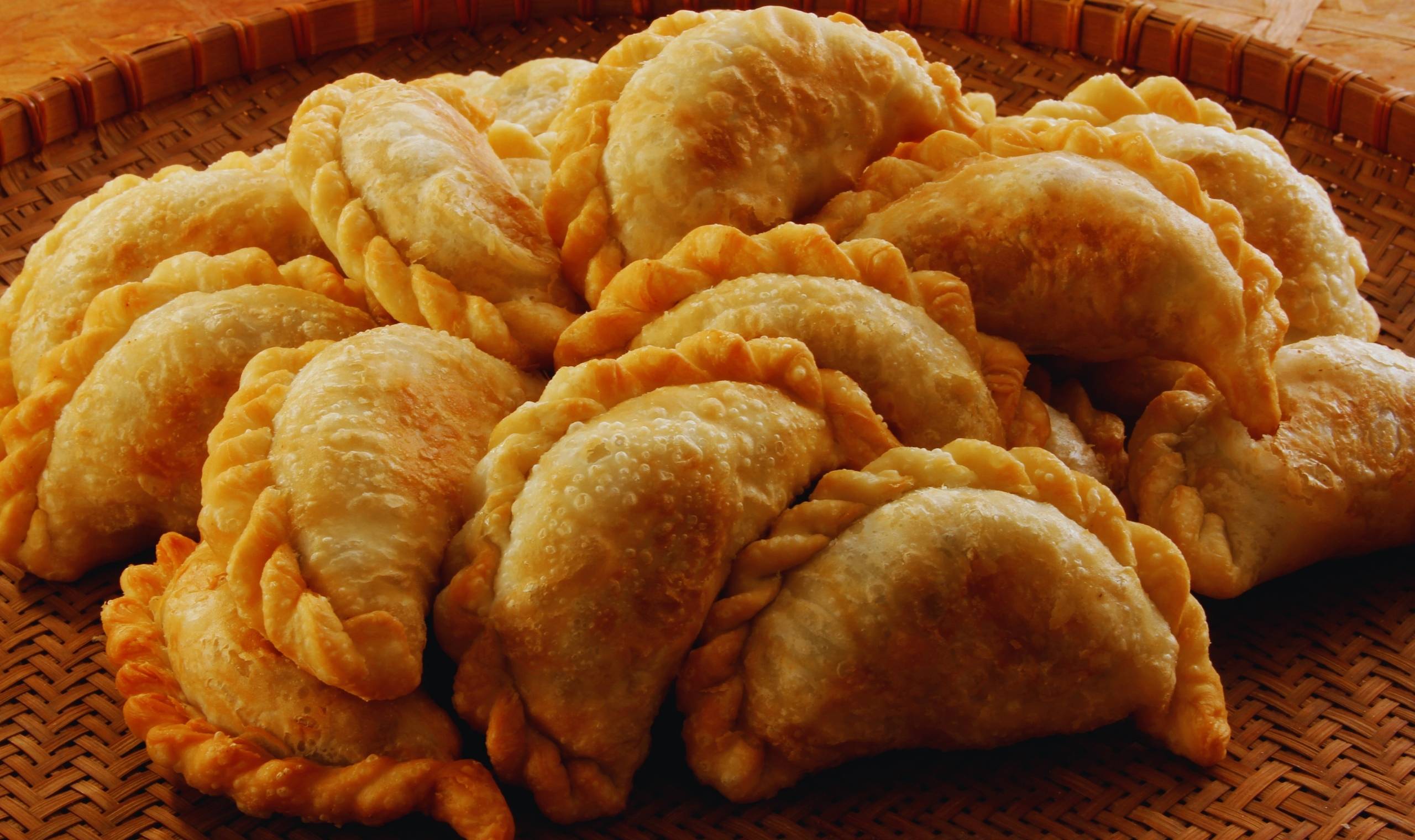Karelian Pie Karjalanpiirakka: A Traditional Treat from Finland
The Karelian pie, (karjalanpiirakka), boasts rich historical roots that can be traced back to the Karelian region. Karelia is situated between Finland and Russia. This delicacy has been a longstanding staple among the local population for centuries, reflecting the unique cultural interplay between these neighboring regions. The traditional preparation methods of karjalanpiirakka demonstrate a profound connection to the land and its resources, characterized by the use of local, easily accessible ingredients. Typically, the crust of the Karelian pie is made from a mixture of rye and wheat flour, while the filling often includes rice, barley, or mashed potatoes, showcasing the everyday common fare available to early settlers.
The inception of the Karelian pie can be traced to the agrarian lifestyle of the Karelians, who relied on seasonal ingredients to craft nourishing meals. The significance of the pie extends beyond mere sustenance; it has become an emblematic dish within Finnish cuisine and a symbol of Karelian identity. The cultural importance of karjalanpiirakka can be seen in its role during celebrations, gatherings, and family occasions. It is often served as a comforting snack or as part of traditional meals, resonating with those who have grown up enjoying these pies.
Additionally, the historical context surrounding the Karelian pie offers insight into the migration patterns and the exchange of culinary traditions between the Karelians and neighboring Finnish communities. As settlers moved across borders, the recipe for the Karelian pie evolved, embodying various regional modifications while maintaining its essential character. The enduring legacy of karjalanpiirakka serves as a testament to the resilience and adaptability of cultural gastronomy, making it a cherished element of Finnish and Karelian heritage.
A Brief History of Karelian Pie
The Karelian pie, or karjalanpiirakka, is a traditional Finnish delicacy with a rich history that dates back several centuries. Originating in the region of Karelia, this pie showcases the resourceful and inventive spirit of the local communities. Traditionally made from rye crust and filled with a variety of ingredients such as rice, potato, or barley porridge, the origins of the recipe reflect the agricultural practices and available resources of the area. Over the years, the preparation of Karelian pies has been passed down through generations, making them an intrinsic part of Karelian heritage.
During the 19th century, as Finland began to shape its national identity, the Karelian pie gained prominence in various cultural festivals and events. These gatherings often involved community participation, where families came together to prepare large quantities of karjalanpiirakka for friends and neighbors. This communal aspect of Karelian pie-making not only solidified the pie’s status as a beloved dish but also emphasized the importance of swift relocation to defend traditional customs amidst neighboring influences.
In Finland, Karelian pies are celebrated during various occasions, including weddings and holidays, signifying their role in family and social gatherings. The pie has become a symbol of hospitality, often served during festive meals and ceremonies. Interestingly, the popularity of Karelian pies has now transcended borders, with variations appearing in different regions, while still maintaining the essence of the original recipe.
As times have changed, so too have the methods of preparing karjalanpiirakka. Although modern conveniences may have altered the crafting process, the spirit and cultural significance of the pie remain intact. Today, Karelian pies are not just regional specialties; they represent a timeless connection to Finnish heritage and traditions that continue to be celebrated, ensuring the recipe evolves while honoring its storied past.
What Makes Karelian Pie Unique?
The Karelian pie, known as karjalanpiirakka in Finnish, stands out due to its distinctive rye crust and the unique filling it boasts. Unlike many pastries that rely on enriched dough, the crust of a karelian pie is crafted from a simple combination of rye flour and water, which imparts a hearty flavor profile. The use of rye not only pays homage to traditional Finnish agriculture but also gives the pie a dense, chewy texture that is hard to replicate with other grains.
At the heart of every karelian pie lies the filling, typically made from rice porridge. This filling can vary, sometimes incorporating creamy rice, potatoes, or even a mixture of these ingredients. The rice porridge is cooked until soft, creating a mildly sweet contrast to the robust flavor of the rye crust. This combination of textures and flavors is not easily found in other pastries, allowing the karelian pie to retain a unique identity. While many countries have their equivalents, such as the Russian kulebyaka or American pot pie, these often favor richer, pre-fermented crusts, filled with more complex concoctions of meats and vegetables.
Ultimately, the combination of rye crust and distinctive filling sets the karelian pie apart from similar pastries worldwide. Its foundational ingredients and traditional preparation methods contribute to a flavor experience that is both unique and classic, making it a steadfast favorite in Finnish cuisine.
Egg Butter: The Perfect Accompaniment
Egg butter, known as “munavoi” in Finnish, is an essential topping that enhances the experience of consuming a Karelian pie. This traditional spread consists primarily of hard-boiled eggs and butter, combined to create a delectable mixture that complements the savory flavors of the karjalanpiirakka. To prepare egg butter, one simply needs to hard-boil a few eggs, peel them, and then mash them together with softened butter. A pinch of salt can be added for seasoning, and some people prefer to mix in fresh herbs or spices for an extra layer of flavor. The resulting spread is creamy, rich, and has a delightful texture that pairs beautifully with the crust of the karelian pie.
In Finnish culture, the combination of egg butter and Karelian pie is cherished, as it embodies a tradition that dates back generations. The soft, savory filling of the Karelian pie—often made from rice, barley, or potatoes—blends seamlessly with the smooth, creamy egg butter. This classic duo transforms a simple dish into a comforting meal or snack, making it particularly popular for gatherings, holidays, and festive occasions.
While egg butter remains the most beloved accompaniment for Karelian pies, other toppings can enhance the experience. Traditional options include mustard or pickled vegetables, which provide a tangy contrast to the rich filling of the pie. Additionally, some enjoy a dollop of sour cream or crème fraîche, bringing a touch of acidity to balance the flavors. Regardless of the topping chosen, the key is to respect the integral characteristics of the Karelian pie while exploring various combinations that reflect personal tastes and preferences.
In summary, egg butter is not merely a topping but a quintessential part of the Karelian pie experience, encapsulating the flavors and traditions of Finnish cuisine.
Recipes for Authentic Karelian Pie
The Karelian pie, or karjalanpiirakka, is a beloved traditional Finnish delicacy, known for its thin, crisp crust and hearty filling. This section provides various recipes designed to suit different dietary preferences, ensuring that everyone can enjoy this delicious treat. Below, you will find a traditional recipe, as well as vegan and gluten-free adaptations to cater to diverse needs.
Karjalanpiirakka, or Karelian pasties, are traditional Finnish pastries filled with rice or other porridges in a thin rye crust. Here are five recipes with creative variations while staying true to their authentic charm:
1. Classic Karelian Pastry Recipe
Ingredients:
- For the crust:
- 200g rye flour
- 50g plain flour
- 1 tsp salt
- 150ml water
- For the filling:
- 200g short-grain rice
- 500ml milk
- 500ml water
- 1 tsp salt
- For topping:
- Butter mixed with milk (for brushing)
Method:
- Prepare the filling by cooking rice in water until absorbed, then add milk and simmer into a thick porridge. Season with salt and cool.
- Mix crust ingredients into a firm dough. Roll into a log and divide into 10 pieces. Roll each into a thin oval.
- Add a small amount of filling to the centre, fold the edges, and pinch into a traditional crimped shape.
- Bake at 225°C (435°F) for 15 minutes. Brush with butter-milk mixture and serve warm.
2. Barley Karjalanpiirakka
Ingredients:
- For the filling:
- 200g pearl barley
- 1 litre water
- 1 tsp salt
- Follow the same crust recipe as above.
Method:
- Cook pearl barley in water until soft and porridge-like. Season with salt.
- Prepare and fill as per the classic recipe.
- Bake and brush with butter-milk mixture for a rustic twist.
3. Potato Karjalanpiirakka
Ingredients:
- For the filling:
- 500g potatoes (peeled and boiled)
- 50ml cream
- 1 tbsp butter
- 1 tsp salt
Method:
- Mash boiled potatoes with cream, butter, and salt.
- Follow the classic crust and shaping method.
- Fill with the potato mixture, bake, and brush with butter-milk mixture for a creamy variation.
4. Sweet Karjalanpiirakka
Ingredients:
- For the filling:
- 200g rice
- 500ml milk
- 2 tbsp sugar
- 1 tsp vanilla extract
- For the topping:
- Sweetened cream or jam.
Method:
- Cook rice in milk, sweeten with sugar, and flavour with vanilla.
- Prepare and fill as per the classic recipe.
- Serve with dollops of sweetened cream or jam as a dessert option.
5. Vegetable Karjalanpiirakka
Ingredients:
- For the filling:
- 300g grated carrot
- 200g mashed swede or parsnip
- 50ml cream
- 1 tsp salt
- Follow the same crust recipe as above.
Method:
- Steam grated carrots and mash swede or parsnip with cream and salt.
- Shape and fill with the vegetable mixture.
- Bake and brush with butter-milk mixture for a colourful, hearty version.
Each version celebrates the traditional rye crust while adapting fillings to modern tastes or dietary preferences. Pair with egg butter or enjoy as they are!
Karelian Pie in Finnish Culture
Karelian pie, or karjalanpiirakka, holds a significant place in Finnish culture, transcending mere culinary delight to embody a rich historical and social tapestry. This traditional pastry, originally hailing from the Karelia region, symbolizes the resourcefulness and resilience of Finnish heritage. Its simple yet wholesome ingredients—rye crust filled with rice porridge or mashed potatoes—reflect the historical context of a society that valued sustenance drawn from local resources.
In contemporary Finland, the karelian pie is a staple at various celebrations and gatherings. It is commonly served during festive occasions such as Midsummer and Christmas, where families come together to create cherished memories. The pie is often enjoyed with egg butter (munavoi), a spread that enhances its flavor, making it a beloved addition to Finnish tables. Its presence at communal meals reinforces the significance of togetherness and tradition, as individuals bond over this comforting dish.
Moreover, karelian pie has manifested itself in Finnish art and literature, illustrating its cultural significance. Artists and writers have drawn inspiration from the pie, using it as a symbol of Finnish identity and heritage. Various literary works pay homage to the karjalanpiirakka, depicting its role in everyday life and the emotions associated with it. Additionally, the pastry has been celebrated in art forms, ranging from paintings to culinary exhibitions that highlight its historical roots and contemporary appreciation.
The karelian pie continues to evolve within Finnish society, reflecting the interplay between tradition and modernity. As new generations discover and reinterpret this classic treat, the essence of the karelian pie remains a vibrant part of Finland’s cultural landscape. In this way, the pie is not only a culinary treasure but a symbol of unity, history, and national pride, cherished by Finns at home and abroad.
Jokes and Anecdotes About Karelian Pie
Karelian pie, known as karjalanpiirakka in Finnish, is not only a beloved culinary creation but also an enduring source of humor within Finnish culture. The process of making these delightful pastries often invites a light-hearted spirit and a wealth of anecdotes, making it an ideal subject for jokes and puns.
One popular joke goes: “Why did the Karelian pie refuse to sing at the concert? Because it couldn’t find its filling!” . This is a delightful play on words that highlights the essential ingredients of the pie while eliciting laughter. The simple yet delicious filling of rice porridge or mashed potatoes can often inspire further puns.
“I asked my friend how he made his karelian pie so delicious. He said it was all in the ‘pasta-bilities’!”. These light-hearted jokes reflect the joy that karjalanpiirakka brings to gatherings, often serving as a centerpiece at celebrations.
Additionally, many families have their own unique stories tied to this traditional dish. One anecdote told around Finnish dinner tables recounts a grandmother who, while trying to teach her grandchildren the art of making karelian pie, ended up accidentally switching the sugar and salt. The result was a hilariously disastrous batch of pastries that prompted laughter and a lifetime of lessons about ingredient measurements!
In social gatherings, sharing karelian pie often leads to friendly banter. People enjoy teasing each other about who makes the best version, and this ongoing debate often spurs on some witty remarks. “My karelian pie has so much butter, it practically slides off the plate!” is a common declaration, igniting hearty laughter among friends and family.
Where to Find Karelian Pie
The quest for authentic karjalanpiirakka, or Karelian pie, can lead you to a delightful array of bakeries and restaurants, both in Finland and beyond. To savor this traditional Finnish delicacy, it is advisable to seek establishments that prioritize authentic recipes and traditional baking techniques. In Finland, many local bakeries offer freshly made Karelian pies, often featuring a combination of rice porridge and potato filling, encased in a thin rye crust. Notable spots include the famous ‘Konditoria Tein’ in Helsinki and ‘K Ruiz’ in Joensuu, celebrated for their commitment to preserving traditional baking methods.
Additionally, restaurants specializing in Finnish cuisine are often great places to explore a variety of Karelian pie options. For instance, scenic eateries in Lapland frequently serve their own variations, allowing guests to experience regional interpretations of this beloved treat. When you are in Finland, consider asking locals for their recommendations, as hidden gems may not always be listed in travel guides.
For those outside of Finland or looking for convenience, various online platforms also provide access to Karelian pies. Gourmet food websites and Finnish specialty stores offer frozen or ready-to-eat Karelian pies that can be conveniently shipped internationally. Furthermore, social media groups and forums dedicated to Finnish cuisine might lead you to local markets or events featuring distinct culinary offerings, including karjalanpiirakka. Engaging with these online communities not only enhances your chances of discovering authentic Karelian pie. It also allows for an enriching exchange of culinary experiences. Whether you are in Finland or abroad, the pursuit of this unique delicacy promises to be a rewarding gastronomic adventure.
Tips for Enjoying Karelian Pie
To fully appreciate the unique flavors of a Karelian pie, it is essential to consider not just the dish itself. But also how it is served and paired with other foods and beverages. The traditional Karelian pie, known for its thin rye crust and savory rice filling, can be enhanced with a few thoughtful additions that elevate its taste and the overall dining experience.
One popular method of enjoying Karjalanpiirakka is by topping it with a mixture of butter and egg, referred to as “munavoi.” This rich combination not only adds creaminess but also complements the rustic flavor of the rye pastry. Simply spread a generous layer of the butter and egg mixture over the warm pie for an indulgent treat that resonates with both tradition and taste.
When it comes to beverages, Karelian pies pair wonderfully with a wide array of drinks. A cup of strong Finnish coffee is a classic choice that balances the savory notes of the pie. Alternatively, for those seeking something lighter, a herbal tea or even a refreshing soft drink can provide a pleasant contrast, making the dining experience more enjoyable.
The ideal serving temperature for a Karelian pie is slightly warm, which allows the filling to be soft and flavorsome. Additionally, consider assembling a platter of Karelian pies with various toppings, creating an inviting landscape of flavors for guests. These entertaining arrangements serve as both a feast for the eyes and the palate, prompting conversations and shared enjoyment among family and friends.




1 comment